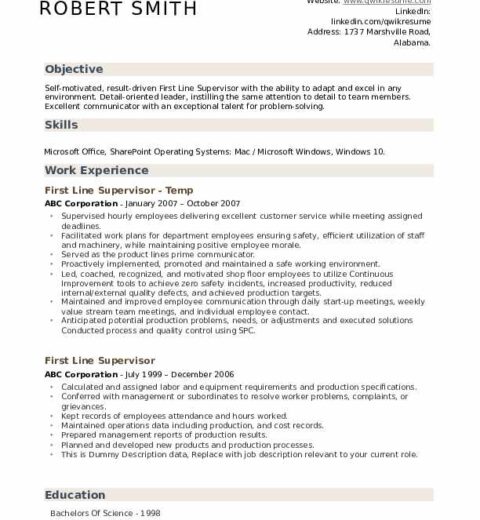In the ever-evolving landscape of job hunting, a pertinent query arises: “One page or more? How long should your resume be in 2025?” Selecting the optimal length for a resume has become an intricate balancing act, influenced by myriad factors including industry standards, technological advancements, and shifts in hiring practices. As we venture deeper into 2025, understanding the nuances surrounding resume length can prove pivotal in the quest for career advancement.
Historically, the resume was designed to be an at-a-glance summary of one’s professional background, a succinct portrayal of qualifications tailored to entice prospective employers. Traditionally, a one-page resume was the gold standard, particularly for entry-level positions and those with limited experience. This brevity appealed to hiring managers who faced the daunting task of sifting through a plethora of applications in minimal time. But has the paradigm shifted?
The advent of technology and changing job dynamics prompts us to reconsider the singular emphasis on brevity. The question remains: when is it prudent to break away from the one-page format? For candidates with extensive experience, multiple roles, or a wealth of relevant achievements, a longer resume may be a necessity rather than a choice. In 2025, it is not uncommon to find resumes that extend to two or even three pages, particularly in fields demanding higher levels of expertise or creativity.
One must consider the expectations of the industry in question. In sectors such as academia, science, or high-level corporate management, a two-page resume is frequently perceived as acceptable, if not essential. These industries often appreciate candidates who can provide comprehensive details about their professional journey, including research projects, publications, and significant contributions. Conversely, in fast-paced industries like startups or tech, concise information holds higher esteem. Here, a one-page resume garners attention, sparking interest with efficient wording and impactful statements.
Intriguingly, remote work trends rising post-pandemic cast further light on the shifting expectations surrounding resume length. With countless companies now embracing flexible work arrangements, employing a global workforce, traditional notions of “local” resumes have started to fade. This global canvas allows applicants from various backgrounds to present their diverse experiences in a more expansive manner. Consequently, the length of one’s resume can serve as a platform to showcase cross-cultural competencies or unique professional skills that may be less relevant in a localized job market.
So, how does one navigate this evolving terrain? A practical approach is paramount. Firstly, think critically about the goal of your resume. Are you aiming to land an interview or simply provide detailed information about your career? If you lean towards the former, prioritize clarity and brevity. However, if portraying your complete professional narrative is your aim, more space may be warranted. Understanding the role and its requirements can guide your decision effectively.
Engaging in the art of tailoring is another vital component. In 2025, job seekers must tailor their resumes for each application. This means selectively including only those experiences and accomplishments that resonate with the specific role. By strategically omitting less relevant details, you may mitigate the risk of an unnecessarily lengthy document while ensuring your most compelling attributes shine through. Simultaneously, it illustrates a keen attention to the needs of your potential employer.
Furthermore, the layout of your resume can significantly impact its readability, regardless of length. Employing clean, well-defined sections enhances the user experience for hiring managers. Utilize bullet points for clarity, making it easier to skim through the document. The crafting of headers is equally crucial; headings should succinctly signify the content contained within, providing ease of navigation. In this visual context, readability takes precedence over length.
The challenge of including supplementary information awaits. As applicants contemplate the balance of quantity versus quality, the lure of extraneous details can be enticing. However, be wary of the urge to pad your resume with superfluous information that does little to enrich your narrative. Each line must be purposeful, contributing to a cohesive story of professional growth and competence.
Emerging trends also merit consideration. The integration of digital portfolios and multimedia elements has gained traction. In 2025, job seekers can bolster their resumes by linking to portfolios, online profiles, or video introductions. Such augmentations not only provide additional context but also allow candidates the opportunity to present themselves as dynamic and multifaceted individuals—further urging the question of traditional resume length.
As we fast approach 2025, the conversation around resume length continues to evolve. While the one-page resume has its merits, professionals must remain agile and responsive to industry standards and personal circumstances. An adaptable mindset, combined with a strategic execution, will hold the key to crafting compelling resumes that stand out in a competitive landscape. Ultimately, it is less about rigid adherence to page count and more about delivering a powerful narrative that aligns with the expectations of potential employers.
In conclusion, as candidates prepare to enter or re-enter the job market, the resolution to “One page or more?” may not yield a definitive answer. Instead, it opens the door to a deeper contemplation of strategy, personal branding, and industry expectations. Navigating this landscape requires finesse, but those who embrace the complexities of resume crafting will undoubtedly navigate their career paths with confidence in 2025 and beyond.



